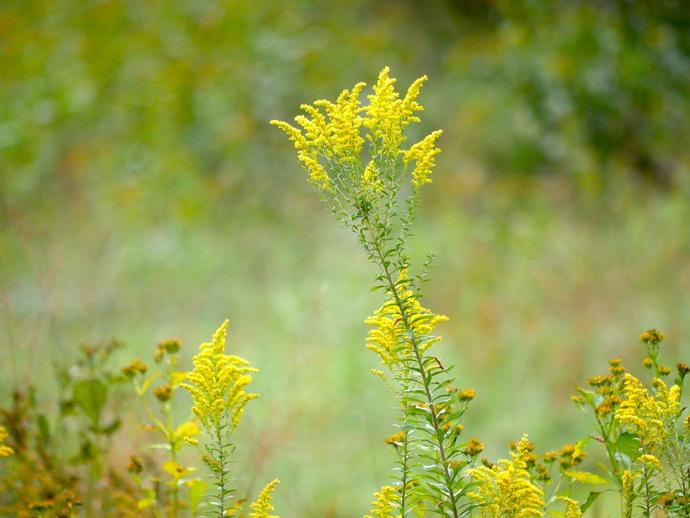October 22, 2020
It's time for today's #BenInNature update! There are more than 100 different species of goldenrods within the genus Solidago, and this is certainly one of them! It's often difficult to distinguish these plants down to species as many species look extremely similar, but if you see a plant similar to this one with sprays of yellow flowers blooming in late summer to early fall, there's a good chance you've spotted a goldenrod.
Most goldenrods are native to North America and they're typically found in open areas such as fields and meadows. When there's plenty of moisture and the weather is warm and sunny, goldenrods produce a great deal of nectar, which makes it an important plant for supporting pollinators. They also provide food for a large number of moth and butterfly caterpillars.
Goldenrod gets a bad rap because its pollen is often claimed to cause hay fever. However, goldenrod pollen is too heavy to blow very far on the wind, and it's mostly pollinated by insects. The true hay fever culprit is ragweed (genus Ambrosia), which is in bloom around the same time and makes goldenrod guilty by association.
Interestingly, goldenrod leaves contain a small amount of rubber. Thomas Edison experimented with goldenrod rubber extensively and automaker Henry Ford collaborated with inventor George Washington Carver during World War II to see if goldenrod could potentially be a commercial rubber source. Goldenrod rubber turned out to be of fairly poor quality, and by 1944, chemists working for the U.S. government had cracked the code on the production of reliable synthetic rubber. Had things gone differently, we might all be rolling down the highway on goldenrod tires!
ABOUT #BenInNature
Social distancing can be difficult, but it presents a great opportunity to become reacquainted with nature. In this series of posts, Administrator of Science Ben Williams ventures outdoors to record a snapshot of the unique sights that can be found in the natural world. New updates are posted Monday - Friday, with previous posts highlighted on the weekends.
NATURE PHOTO IDENTIFICATIONS
If you discover something in nature that you would like help identifying, be sure to message us right here on Facebook with a picture (please include location and date of picture) and we'll have our experts help you identify it!

 Hours & Admissions
Hours & Admissions Directions
Directions

